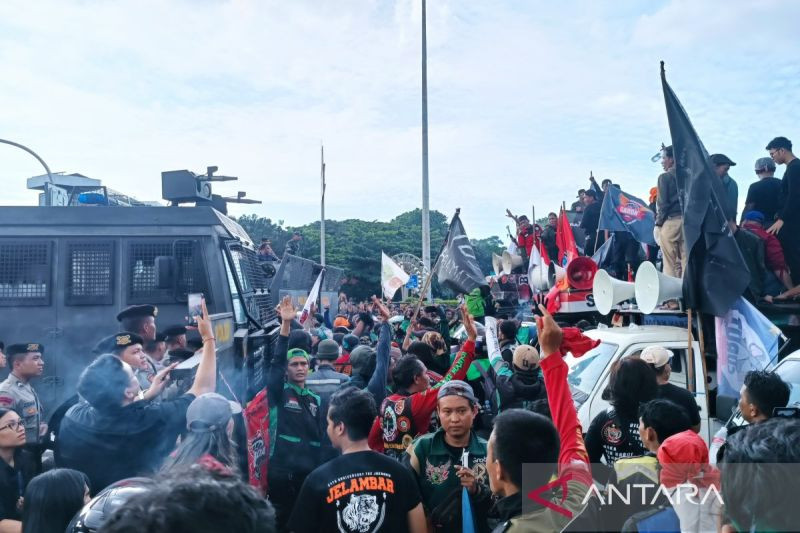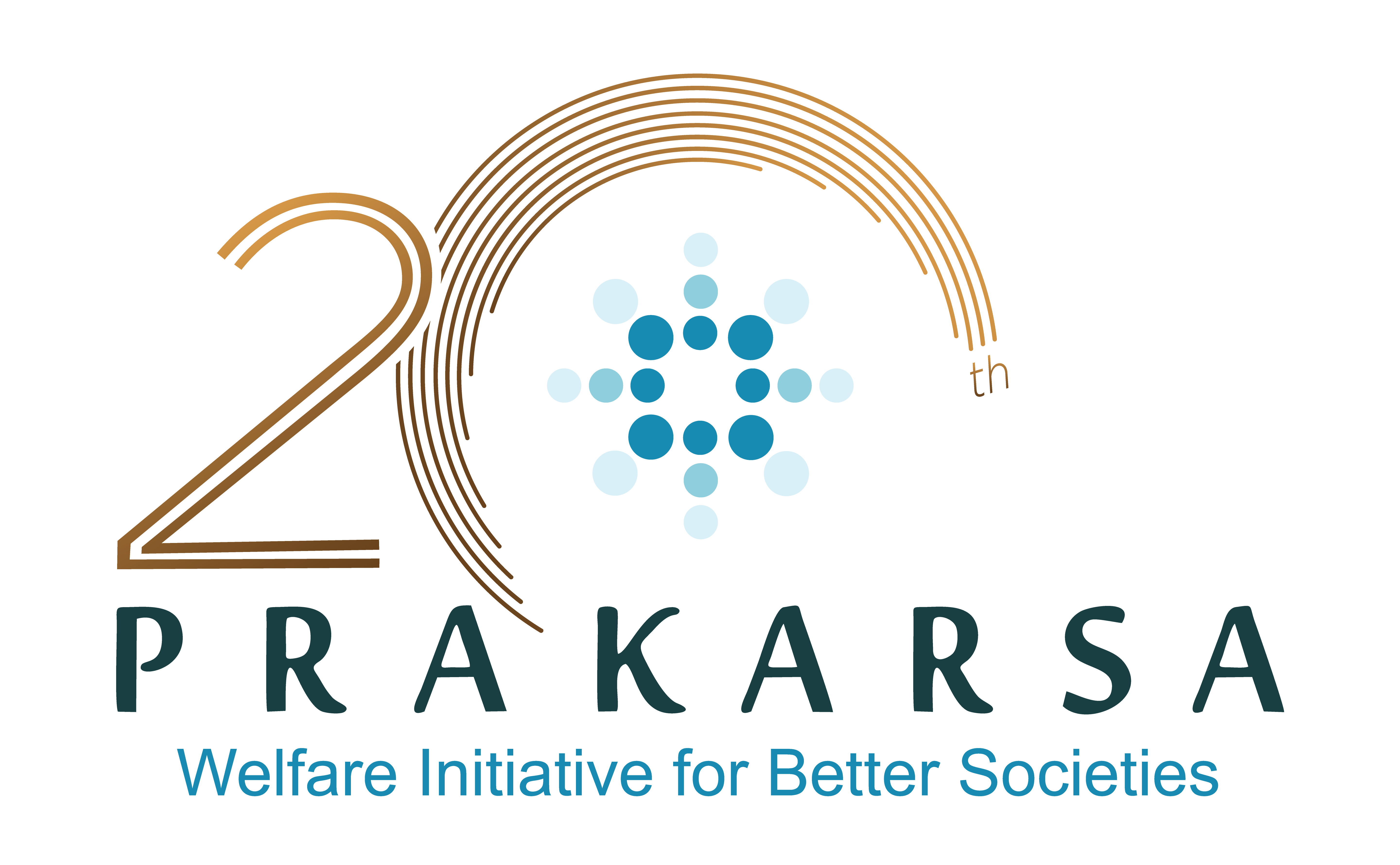Behind the industry lies a clear indication of the goverment’s failure the provide adequate and quality formal employement for its citizens.

By: Pierre Bernando Ballo and Ahmad Nabil Putra Priono (The PRAKARSA)
Online motorcycle taxis (ojol) have become one of the largest employment providers in Indonesia, especially in urban areas. Currently, data from the Workers Social Security Agency (BPJS Ketenagakerjaan) states that around 2 million ojol drivers are officially registered on the platforms, although the real number far exceeds this figure. The majority of workers now treat ojol as their primary job.
Research by The PRAKARSA from 2017 shows that out of 213 respondents surveyed, 60 percent consider ojol their main occupation. In terms of working hours, 26 percent of drivers work more than 48 hours per week, an amount classified as “excessive” by the ILO Convention on working hours.
Over the past decade, the number of ojol drivers has grown exponentially, along with the platforms themselves. The narrative that ojol has become the backbone of the economy continues to be echoed. However, rather than taking this at face value, the public should critically reassess the narrative. Behind the glamor of this industry lies a clear indication of the government’s failure to provide adequate and quality formal employment for its citizens.
The rise of the ojol ecosystem is inseparable from the long-standing structure of Indonesia’s labor market. Early deindustrialization, marked by stagnation or even decline in the manufacturing sector’s contribution to GDP since the 2000s, has pushed the growth of informal sectors, characterized by flexible hours and precarious working schemes, which gave birth to ojol industry.
The emergence of ojol is also influenced by the shrinking availability of formal jobs and a wave of layoffs. As of May, data from the Manpower Ministry shows at least 26,455 people have been laid off. The majority subsequently choose to become ojol drivers, despite the high workload and risky flexibility.
PRAKARSA’s study noted that 82.1 percent of drivers previously held permanent jobs but switched for various reasons, one of which being layoffs. Other studies also indicate that ojol is the primary fallback option for laid-off formal workers, even more so than other informal jobs. Many former formal workers also invested their severance pay or Job Loss Insurance (JKP) claims into purchasing a motorbike.
Interestingly, despite the massive layoffs, data from BPS (Statistics Indonesia) shows that Indonesia’s open unemployment rate fell to 4.76 percent in February, a year-on-year drop of 0.06 percentage points. One reason is that BPS classifies ojol drivers as “informal workers,” regardless of their precarious conditions after layoffs. This categorization biases the reality of vulnerability faced by ojol drivers who often work excessive hours but are underpaid.
Throughout 2025, there have been four large-scale protests by ojol drivers from various platforms. The largest one, “Aksi 205” held in May, saw over 25,000 ojol drivers go on “off-bid” (turning off their apps), disrupting travel for thousands of passengers. Their demands included guaranteed Idul Fitri bonuses (THR) and platform-provided incentives, the abolition of partnership status, reduced platform commission rates to 10 percent, the removal of discriminatory schemes and access to BPJS Ketenagakerjaan’s social protection programs.
The responses were mixed. The platforms argued that job creation is not their main responsibility. The Manpower Ministry is still reviewing regulations concerning the legal status of ojol drivers and their right to social protection through BPJS. However, progress remains stagnant due to diverging interests among stakeholders.
While the job offers flexibility aligned with drivers’ personal needs, it lacks long-term prospects. Long working hours, minimal social protection, weak bargaining power and other vulnerabilities are clear indicators of indecent work within the ojol industry ecosystem. Under these circumstances, it is incumbent upon the industry to reform itself to treat ojol drivers with humanity.
According to the ILO’s concept of decent work, the ojol industry should integrate four main pillars of decent work: decent employment, social protection, workers’ rights and social dialogue.
First, decent employment requires that ojol drivers have access to productive jobs with fair income. This requires government and regulatory intervention to create decent jobs and ensure proper compensation. Government programs such as Wage Subsidy Assistance (BSU) can also help improve driver welfare.
Second, social protection demands access to schemes. Currently, as Informal Workers (PBPU), drivers can only voluntarily enroll in Work Accident Insurance (JKK), Death Benefit (JKM) and Old-Age Benefit (JHT). Yet BPJS Ketenagakerjaan data shows that only 320,000 out of 2 million drivers are enrolled in these programs. This is partly due to limited information about payment methods and the relatively high premium costs.
To address this, digital breakthroughs are needed, such as linking drivers directly to BPJS’s Jamsostek Mobile (JMO) app, which allows for one-stop premium payment. For affordability, the government can take inspiration from Singapore’s Central Provident Fund (CPF), which applies a tripartite cost-sharing mechanism between the government/regulator, platform and worker. BPJS should also open access to benefits currently reserved for formal workers (PU), such as Pension Insurance (JP) and Job Loss Insurance (JKP).
Third, workers’ rights need legal clarity and protection. This includes defining the legal status of drivers and securing their rights. One step is classifying ojol drivers as part of Micro, Small and Medium Enterprises (MSMEs), which would allow them access to government microfinance programs like People’s Business Credit (KUR) while transitioning toward becoming formal workers. Regulators and platforms should also ensure commission structures are fair and do not erode drivers’ real income, and provide bonuses in accordance with prevailing labor laws.
Fourth, social dialogue requires the creation of transparent, equitable, tripartite relationships. For example, ojol driver unions should be included in drafting relevant policies such as the Online Transportation Bill and the amendment to the Social Security System Law (SJSN).
The massive growth of the ojol sector, though providing jobs, reflects the government’s failure to supply decent formal employment. Early deindustrialization and layoffs have driven many workers into the informal sector, with ojol as the first fallback.
It is time the ojol industry is celebrated not merely for its contribution to employment and the economy, but for ensuring a fair and decent work system. Gradual tripartite collaboration is essential to find common ground among all stakeholders involved.
***
This article was published in thejakartapost.com with the title “Equitable reform required for the ojol industry”. Click to read: thejakartapost.com

